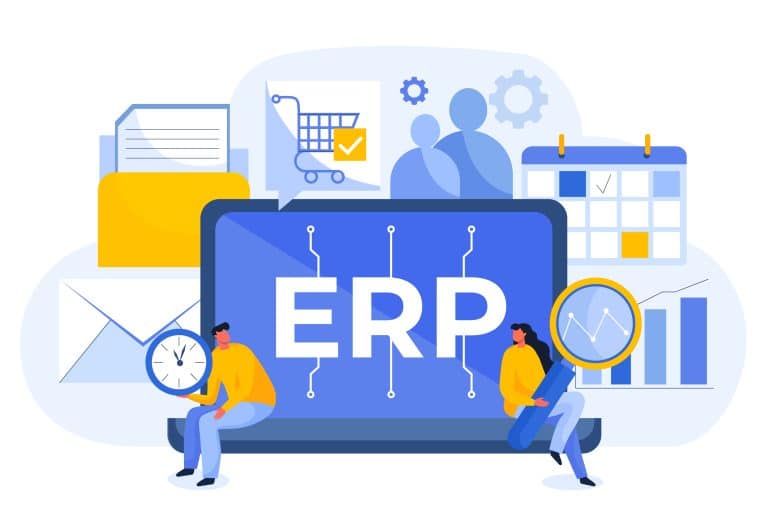The process of tracking and managing your company’s inventory, which includes raw materials, components, and finished goods, is known as inventory management. A successful inventory management strategy will help your Kiwi business meet customer demand levels while keeping inventory costs low. For a detailed exploration, you might find the insights in “What is an inventory management system?” particularly useful for the New Zealand context.
Benefits of Using an Inventory Management System
Streamlines Inventory Tracking: Automates the process, freeing up resources for other business areas.
- Increases Efficiency: Smooths out the management of stock levels.
- Reduces Manual Tasks for Staff: Automatically updates inventory levels, lessening the need for manual intervention.
- Prevents Stock Issues: Real-time updates reduce the likelihood of stock-outs or overstock, ensuring a smoother sales process.
- Provides Insightful Analytics and Reports: Offers better decision-making tools based on accurate and timely data.
- Cuts Labor Costs: Eliminates the need for manual inventory counts and checks, reducing labor expenses.
Is it time to switch to an inventory management solution?
Understanding your business needs is essential when deciding upon an inventory management solution. Key considerations include the type of inventory you manage, the adequacy of your current system, your future needs and goals, along with the resources and capacities your business has to support a new system.
Identify the Type of Inventory You Manage
Inventory management techniques such as cycle counting, ABC analysis, just-in-time (JIT), and perpetual inventory can help manage different types of stock. To better understand these techniques, “ERP vs. Inventory Software” offers valuable insights tailored for New Zealand businesses.
Assess your Current System
Understanding the current inventory management processes, software, and tools in place is a vital step in the selection process. Identifying the limitations and challenges of your current system can provide a clear direction on where improvements are needed for enhanced efficiency. The article, “Engaging with NetSuite: What Makes Their Inventory Management Stand Out?“, might offer some interesting comparisons relevant to NZ companies.
Consider Your Future Needs and Goals
A successful inventory management solution does not just meet your current needs but also accommodates future growth and expansion. Identifying your company’s long-term goals is paramount, and finding a scalable solution that grows with your business will ensure a longer-lasting impact.
Analyze Your Resources and Capacity
Before deciding on an inventory management solution, it’s important to assess your business’s resources and capacity. Factors such as internal resources available to support the solution, customization requirements, and the impact on cost and timeframe should all be considered. Delve deeper into scalability issues with “Scaling Up: How NetSuite Adapts to Growing Inventory Needs” with a focus on NZ businesses.
Types of Inventory Management Solutions
The market offers a range of inventory management solutions, including cloud-based inventory management software, warehouse management software, and inventory control software. Each of these has its own set of advantages and disadvantages.
Cloud-based software is accessible from anywhere and can be easily scaled, but it may depend on a stable internet connection. Warehouse management software is advanced and comprehensive, but might be complex and expensive. Inventory control software is simple and affordable, but may lack advanced features.
What Features Should I Look for in an Inventory Management System?
When choosing an inventory management solution, prioritize systems that offer real-time inventory tracking, a user-friendly interface, integration with other business tools, advanced analytics and reporting features, and excellent customer support. The right solution should align with your business goals and provide the capacity to grow and scale with your needs in the New Zealand market.
Real-Time Inventory Tracking
Provides up-to-the-minute stock visibility, preventing stock outs and overstock, crucial for efficient operations.
User-Friendly Interface
Reduces training time and boosts productivity with an intuitive and easy-to-use design.
Integration with Business Tools
Syncs seamlessly with accounting, ERP, CRM, and e-commerce platforms to streamline operations and reduce errors.
Advanced Analytics and Reporting
Offers insights into sales trends, inventory turnover, and supplier performance to inform data-driven decisions.
Multi-Location Management
Tracks inventory across multiple sites, optimizing stock distribution and reducing transfer times.
Automated Reorder Alerts
Triggers alerts at low stock levels to ensure timely reordering and maintain optimal inventory levels.
Barcode Scanning and RFID
Automates data capture to enhance inventory accuracy and speed up order processing.
Mobile Accessibility
Enables inventory management on the go, improving flexibility in dynamic environments.
Scalability and Customization
Adapts to growing business needs and allows customization to fit specific workflows.
Excellent Customer Support
Provides reliable assistance to resolve issues quickly, minimizing disruptions.
Inventory Forecasting
Predicts future needs to optimize stock levels, reduce costs, and align with demand.
Returns Management
Streamlines returns to maintain accurate stock and improve customer satisfaction.
Choosing the perfect inventory management solution for your Kiwi business may seem daunting, but by understanding your needs, assessing your resources, and considering your future goals, it becomes an achievable task. Keep these points in mind as you navigate through the selection process, and you’ll find the solution that best fits your business in Aotearoa.
What are the step-by-step processes for selecting an inventory management system?
1. Assess Current Inventory Management Needs
Begin by conducting a thorough assessment of your current inventory management processes. Identify existing challenges, inefficiencies, and gaps in your current system. Analyze key performance metrics, such as inventory turnover rates, order accuracy, and stockout frequency, to understand what needs improvement. Engage key stakeholders from different departments to gather input on specific pain points and requirements.
2. Define Future Business Goals and Scalability Requirements
Define your business’s long-term objectives and consider how your inventory management needs may evolve. Think about your growth plans, including potential increases in product lines, expansion into new markets, or changes in order volume. Ensure that the system you choose can scale with your business and support future technological advancements like AI-driven forecasting or IoT integration.
3. Research Available Solutions (Cloud-Based vs. On-Premises)
Explore the different types of inventory management systems available, such as cloud-based and on-premises solutions. Cloud-based systems offer flexibility, remote access, and lower upfront costs but may involve ongoing subscription fees. On-premises systems provide more control over data but often require significant upfront investment and dedicated IT resources. Compare the pros and cons of each type based on your business needs, budget, and IT capabilities.
4. Evaluate Features and Integration Capabilities
Create a list of must-have features, such as real-time inventory tracking, automated reorder alerts, multi-location support, and analytics dashboards. Also, consider integration capabilities with other essential business systems, like ERP, accounting software, or e-commerce platforms. This ensures seamless data flow across your organization, reducing manual entry errors and improving overall efficiency.
5. Consider Total Cost of Ownership (TCO)
Calculate the total cost of ownership by factoring in not just the initial purchase price but also hidden costs. These include implementation and training expenses, hardware requirements, ongoing maintenance, and support fees. Consider potential downtime costs and any future upgrades or scalability needs. Understanding TCO helps avoid budget overruns and ensures a more accurate financial assessment.
6. Test Potential Solutions (Through Demos or Trials)
Before making a commitment, test the shortlisted inventory management systems through demos or free trials. This hands-on evaluation allows you to assess user interface, ease of use, and how well the system meets your specific needs. Engage end-users in the testing process to gather feedback on functionality, usability, and any limitations that could impact daily operations.
7. Make a Final Decision Based on All Factors
Compile all gathered information, including stakeholder feedback, feature evaluations, cost analysis, and test results. Compare each option against your key criteria and rank them based on how well they align with your business goals. Ensure that the final decision reflects a balanced consideration of functionality, cost, scalability, and ease of implementation.
How should businesses calculate the total cost of ownership for an inventory management solution?
Initial Software Costs
This includes the upfront cost of purchasing the software license or subscribing to a cloud-based service. Compare pricing models, such as one-time fees, monthly subscriptions, or per-user costs.
Hardware Requirements
Assess the need for additional hardware, such as servers for on-premises systems, barcode scanners, tablets, or other devices required to operate the system efficiently.
Implementation and Training Costs
Factor in costs associated with setting up the system, data migration, and customizing the software to fit your business processes. Include training expenses to ensure your team can effectively use the system.
Ongoing Maintenance and Support Fees
Consider the costs of regular software updates, technical support, and any service agreements needed to keep the system running smoothly. This can also include costs for troubleshooting and addressing unexpected issues.
Potential Cost Savings and ROI
Estimate the potential savings from improved efficiency, reduced errors, and better inventory management. Consider the return on investment by comparing these savings against the total costs, ensuring that the solution offers long-term financial benefits.
Conclusion
Choosing the right inventory management solution is a critical decision that can significantly impact your business’s efficiency, profitability, and growth potential. By carefully assessing your current needs, future goals, and available options, you can select a system that not only streamlines your operations but also scales with your business. This is where JCurve Solutions excels, offering tailored inventory management solutions that align with your specific business requirements. Their expertise ensures seamless integration with existing systems, provides essential features, and delivers valuable insights to drive informed decision-making. With JCurve Solutions’ inventory management system in place, you’ll be well-equipped to optimize your stock levels, reduce costs, and enhance customer satisfaction. By partnering with JCurve Solutions, you can turn your inventory management into a strategic advantage, positioning your business for success in today’s competitive market landscape.










